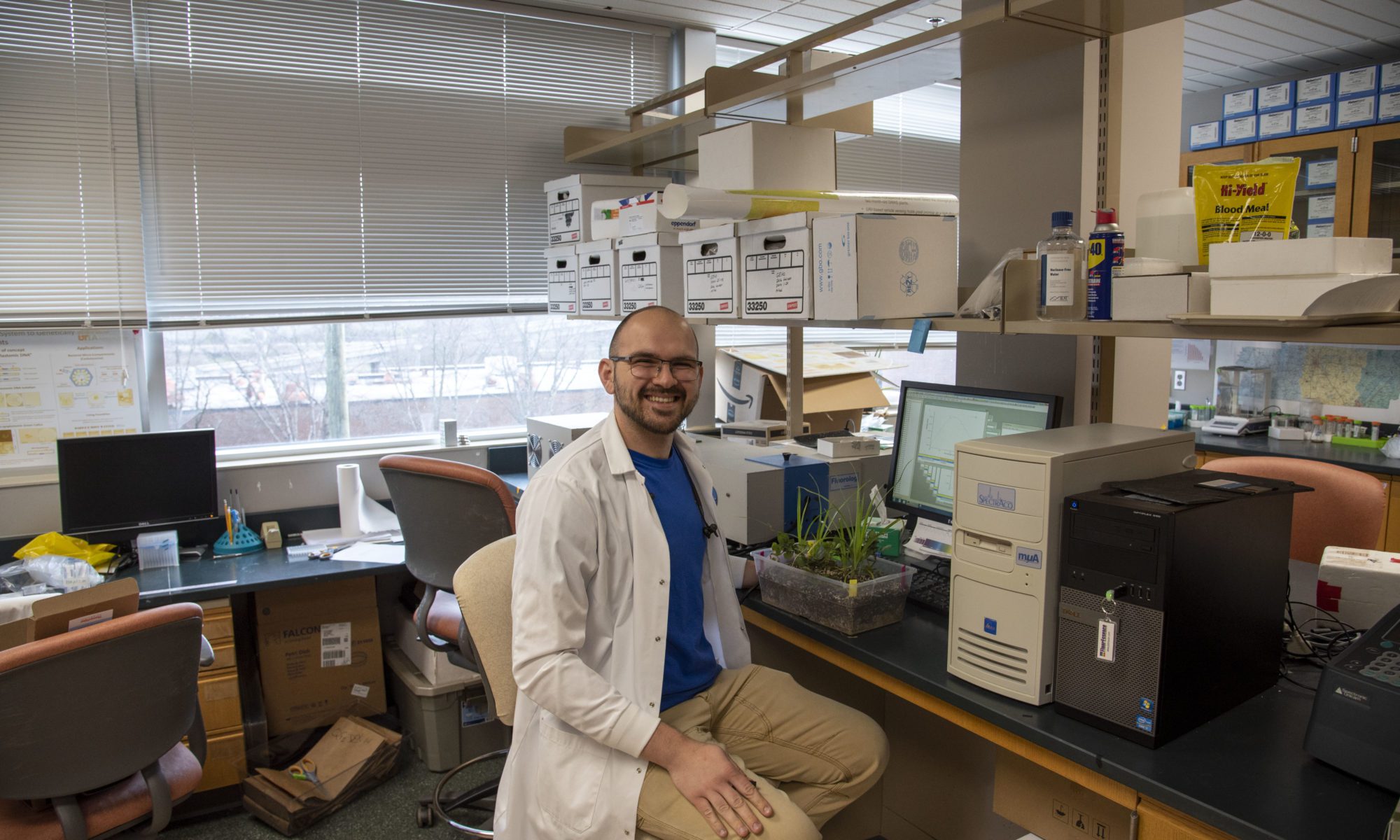
“I’ve always been intrigued by the capabilities of plants,” said Rob Sears, PhD student in plant, soil, and environmental science.
Originally from Durham, North Carolina, Sears mentioned a “push and a pull” when deciding on a college. He felt a push to break the trend of attending Duke, UNC, or Wake Forest, and experienced a pull toward the University of Tennessee due to the types of programs offered by the Herbert College of Agriculture, like the Bachelor of Science in Plant Sciences, specifically. But his passion for agriculture started long before he decided to come to UT.
Sears admitted to being a little “food-obsessed” from a young age, referring to a core childhood memory of his mom tending their garden and tasting a fresh cherry tomato for the first time. Paired with his passion for freshly grown food, Sears has always loved science, and the programs at the Herbert College of Agriculture allowed him to “marry” these two areas.
Sears has channeled his interest in the capabilities of plants toward cutting-edge research in using potatoes to detect gamma radiation, which has recently been published in the Plant Biotechnology Journal. His article, “Engineered gamma radiation phytosensors for environmental monitoring,” explores natural means of detecting the radiation excreted from nuclear reactors, thereby decreasing the need for mechanical sensors and human presence.
According to Sears, “Plants are the ideal organism for biological sensing because they cover nearly the entire world and are uniquely attuned to their environment.” Their immobility, or “sessile nature,” causes them to live with the stressors the environment gives them. Because of this, “they have complex responses that are often specific to a stressor of interest, making them ideal reporters . . .” Through this research, the goal is to make those responses visible.
Potato was an ideal radiation phytosensor because it uses tubers to reproduce. A potato radiation phytosensor will continue to send up new shoots that are genetically identical to the sensor plant originally placed, thus ensuring reliable performance of the sensor over time.
So, why use such sensors to detect radiation? “Nuclear energy is quickly coming to the forefront of the carbon-neutral energy efforts,” Sears explained. With more nuclear power, follows the need for more sensing equipment to ensure safety. “A plant radiation sensor would be self-sufficient, cheaply scalable across a landscape, and directly reflect the impact of radiation on the environment, making it a good option for future monitoring strategies.” Not to mention plants are incredibly radiation resistant, whereas humans are not!
Neal Stewart, professor in plant sciences and faculty partner on this research, called their radiation phytosensor “the crown jewel of DARPA’s Advanced Plant Technologies program.” Since coining the word “phytosensors” more than twenty years ago, Stewart expressed, “I imagined using such an engineered plant to sense dangers and communicate the hazard to humans. So this paper is a dream come true for me.”
Scott Lenaghan, professor in food science and another faculty partner on this work, contributed, “For me, the development of a radiation phytosensor was an exciting opportunity to translate the fundamental radiation biology I studied during my PhD into an engineered biological device that has the potential to impact future radiation monitoring.” He continued, “The radiation phytosensor demonstrates the potential of synthetic biology to engineer plants as ‘devices’ that can impact, not only agriculture, but also provide valuable tools for increasing the safety of the built environment.”
For Sears, the radiation phytosensor research has certainly provided valuable experience academically and professionally, but from his perspective, “Not many people get to make something that is going to help somebody.” Ultimately, using plants to detect gamma radiation is a significant step in creating global impact through modern agriculture.
Of course, Sears says this work would not have been possible without the support of Stewart, Lenaghan, and other faculty mentors. Sears also credits the Defense Advanced Research Projects Agency (DARPA) for funding the research and the Herbert College of Agriculture for providing such experiential opportunities.
According to Sears, the Herbert College of Agriculture is “a great place to have your passions directed.”
